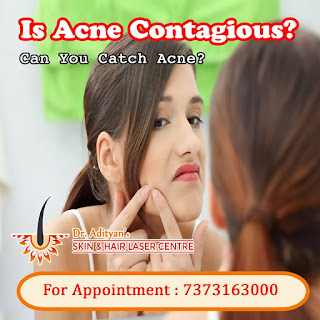How Does Acne Develop?
Acne/Pimple Treatment In Madurai expert describe pimples as a disease of the pilosebaceous units (PSUs). Found over most of the body, pilosebaceous units include a sebaceous gland linked to a canal, referred to as a follicle, which contains a fine hair (see example “Normal Pilosebaceous Unit”). These gadgets are maximum severa on the face, top again, and chest. The sebaceous glands make an oily substance called sebum that commonly empties onto the skin surface through the hole of the follicle, typically called a pore. Cells known as keratinocytes line the follicle.
The hair, sebum, and keratinocytes that fill the slim follicle may additionally produce a plug, that is an early sign of acne. The plug prevents sebum from attaining the surface of the pores and skin thru a pore. The mixture of oil and cells allows micro organism Propionibacterium acnes (P. Acnes) that usually live on the skin to grow in the plugged follicles. These bacteria produce chemicals and enzymes and entice white blood cells that cause irritation. (Inflammation is a function response of tissues to sickness or harm and is marked with the aid of four symptoms: swelling, redness, heat, and ache.) When the wall of the plugged follicle breaks down, it spills the whole thing into the close by skin—sebum, shed pores and skin cells, and bacteria—leading to lesions or acne.
People with acne often have a selection of lesions, some of which might be proven in the illustrations below. The simple pimples lesion, known as the comedo (KOM-e-do), is truely an enlarged and plugged hair follicle. If the comedo remains beneath the skin, it's miles called a closed comedo and produces a white bump referred to as a whitehead. A comedo that reaches the floor of the pores and skin and opens up is referred to as an open comedo or blackhead because it seems black at the skin’s surface. This black discoloration is because of changes in sebum as it is uncovered to air. It isn't always due to dust. Both whiteheads and blackheads can also stay inside the pores and skin for a long term.
Other tough pimples lesions can increase, consisting of the subsequent:
- Papules. Inflamed lesions that generally appear as small, red bumps at the skin and may be soft to touch.
- Pustules (acne). Papules topped by white or yellow pus-filled lesions that may be red at the bottom.
- Nodules. Large, painful, strong lesions which are lodged deep within the pores and skin.
- Cysts. Deep, painful, pus-filled lesions which could motive scarring.

No comments:
Post a Comment